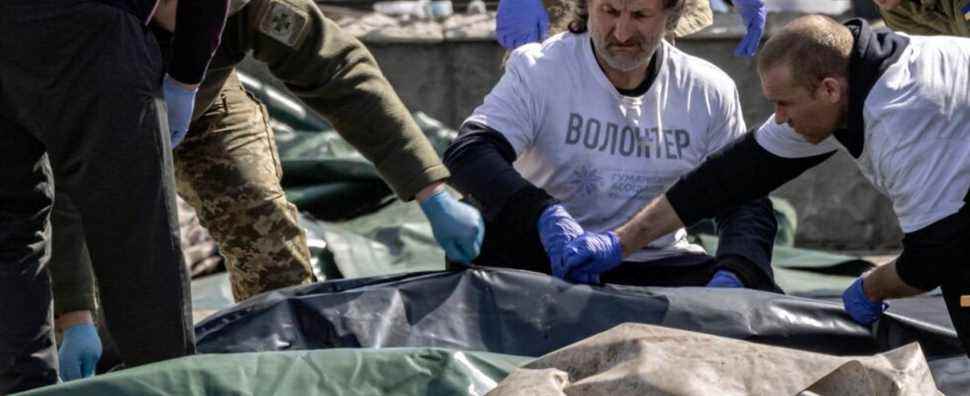After the hybrid war practiced between 2014 and February 2022, in Crimea and in the Donbass, Russia has favored, since February 24, 2022, the pursuit of a frontal conventional war in Ukraine. Why ? The change in type of war corresponds to the change in war aims, strategically speaking. This time, Russia is no longer satisfied with taking another piece of Ukrainian territory, but wants to occupy and dominate the entire country. It is the declared desire to eliminate both the Ukrainian government and the president, Volodymyr Zelensky, which explains the massive and all-out attack by the Russian army.
After six weeks of fierce fighting, however, it appears that the conquest of the entire Ukrainian territory is still beyond the reach of the Russian army. Unable to inflict decisive losses on the Ukrainian army, the Russian military bombarded cities massively and indiscriminately, causing an exodus of civilians, a situation unprecedented in Europe since the Second World War. The war against Ukraine forced 4.3 million Ukrainians to flee their country and forced 6 million others to become internal refugees.
By targeting civilians, the Russian army is violating the juice in bello (the law of war). In fact, the violence against civilian populations and cities in Ukraine has alerted the UN institutions, in particular the General Assembly and the International Criminal Court (ICC). At the UN General Assembly last month, 141 member states condemned Russian aggression against Ukraine. On April 7, the same UN General Assembly, this time including all 193 member countries, suspended Russia from its seat on the UN Human Rights Council.
The ICC, for its part, opened an investigation on March 2 targeting war crimes and crimes against humanity that may have been committed in Ukraine since 2013.
A siege war
At a more strategic level, the element of surprise which turns out to be a determining factor in the present conflict is the surprising capacity for military-civilian resistance of the Ukrainians in the face of the Russian invasion. The Ukrainian army, by launching counter-offensives on several fronts, forced the Russian occupier to change the preferred form of war as well as its strategic objectives. After six weeks of fighting, the losses of the Russian army are estimated at between 10,000 and 12,000 soldiers. These are greater than the losses of the Soviet army in Afghanistan for ten years (1979-1989).
The blitzkrieg practiced by the Russian army at the start of the conflict also turned after six weeks of fighting into a siege war with its share of suffering for besieged civilians in the big cities. This form of warfare was already undertaken in the past by the Russian army in Chechnya (the siege of the capital, Grozny) and in Syria (the siege of Aleppo). Serbia, a Russian ally in the Balkans, also practiced siege warfare against Bosnia and Croatia during the disintegration of Yugoslavia (1991-1995). The Kharkiv headquarters has similarities to that of Sarajevo in Bosnia and the Mariupol headquarters to that of Vukovar in Croatia.
It is to be hoped that the war criminals who are currently bombarding Ukrainian cities and humanitarian corridors will end up in front of international justice.
The ongoing siege war in Ukraine is, strictly speaking, a war of entrapment and extermination. Once again, the Yugoslav example is revealing in the context that concerns us. On the one hand, the war in the former Yugoslavia lasted from 1991 to 2000. On the other hand, the recent massacres which took place in Boutcha, near kyiv, during the withdrawal of Russian forces, are the most morbid proof of the will exterminator of the Putin regime.
Unfortunately, the Boutcha massacre has now been supplemented by another massacre at Kramatorsk station which killed at least fifty-two people, including five children, on April 8. They blatantly evoke the criminal ethnic cleansing of the war in Bosnia and Herzegovina (1992-1995).
Balance of power
France, Germany, Spain, Sweden, Italy, Denmark, Greece and Norway have also announced the expulsion of dozens of Russian diplomats in response to alleged war crimes committed by the military. Russian in Ukraine. The reciprocal should follow soon on the Russian side. This type of war thus foreshadows a long-lasting conflict.
To speed up and find a lasting diplomatic solution in Ukraine, it is therefore essential to help the Ukrainian army. Currently, the United States, Britain and Canada are the most committed to arming Ukraine. It is time for the members of the European Union to do more.
It is only the change in the balance of power against it on the battlefield that will force Russia to negotiate in good faith so that peace returns to Ukraine.
The repositioning of the Russian armed forces and their concentration in the south-east of Ukraine also foreshadows an eventual division of the Ukrainian state into two distinct political units: Eastern Ukraine, entirely controlled by Russia , and Western Ukraine, controlled by the current government and President Zelensky. This scenario is similar to the division of Korea at the end of the war of the same name (1950-1953), into South Korea and North Korea. The international community must do more to prevent this catastrophic scenario for Ukraine’s sovereignty, territorial integrity and security.
